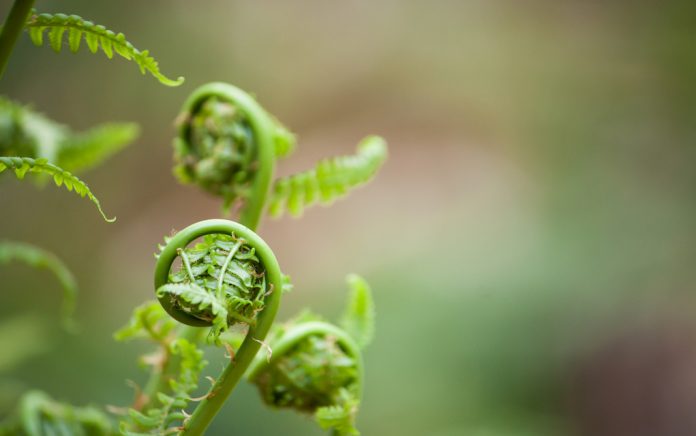
There’s something about the arrival of spring that sets your energy into high gear, and that enthusiasm extends into the world of great tasting spring vegetables and fruits. As we emerge from the doldrums of winter and burst into spring and early summer, the abundance of spring vegetables and other produce is enough to get your heart beating faster, your salivary glands primed, and your mind focusing on finding great ways to enjoy this bounty.
Let’s explore the wonderful and delicious offerings of Mother Nature for spring and how we can bring their nutritional excitement to the table.
Arugula
Also known as rocket, this bitter leafy green is a member of the cruciferous family, along with broccoli, kale, and Brussel sprouts. Arugula is available spring through fall, with the milder cro typically appearing in the spring. The leaves are tender, mildly spicy, and high in nitrates, which can help lower blood pressure. Arugula also provides an excellent amount of vitamin K, which promotes bone health and blood clotting.
Read about 5 spring greens to eat before the season ends
Cherimoya
The peak season for this tropical fruit, which is also known as custard apple, is March through May. Although it is believed to be native to Peru, Boliva, Ecuador, and Colombia, it is now cultivated around the world in tropical areas. In the United States, the fruit is grown in Florida.
Because it has a sweet and creamy texture, it is often enjoyed chilled and eaten with a spoon, earning it a nickname as the ice cream fruit. Its taste has been described as being a mixture of banana, papaya, peach, pineapple, and strawberry.
Chervil
This delicate spring herb counts parsley and carrots among its cousins. Although it is a popular addition to egg dishes, it also perks up salads, soups, and stews. Be prepared for taste that is similar to a cross between parsley and tarragon, and it looks like pale, flat-leaf parsley. Chervil isn’t as easy to find in markets, but you can grow your own. It thrives in pots and likes a mixture of sun and shade.
Dandelions
One person’s weeds is another one’s dinner, and that’s the case with dandelions. The leaves, blossoms, and roots all can be enjoyed in the kitchen as well as for medicinal purposes. Some studies indicate dandelions may help with diabetes, inflammation, liver health, digestion, weight loss, and bone health. They are an excellent source of vitamins A, C, and K as well as calcium, iron, and potassium.
Dandelion greens can be enjoyed raw or sautéed, stir fried, and mixed with other greens in various recipes. If you gather dandelions from the wild, be sure they come from untreated areas.
Fava greens
Did you know the greens of fava beans not only taste similar to the beans themselves but that these great spring vegetables are the perfect addition to your leafy greens repertoire? High in vitamins A and C, the tender leaves have a buttery, earthy flavor that complements a variety of dishes. Enjoy them fresh in salads, sautéed, stir fried, wilted, baked, or used in pesto. Try this easy fava greens recipe.
Fiddleheads
Young ferns have immature growths called fiddleheads that are available from April until July. These delicacies are found in the United States, Europe, Canada, and Asia. You should look for fiddleheads that are wound very tight and are a colorful bright green. If you decide to go looking for fiddleheads and cook them, check out these caveats and recipes.
Morels
These edible wild mushrooms, which make their appearance from April to June, are highly sought after. In the nutrition department, they are excellent sources of vitamin D and iron. They have a nutty, earthy taste, a meaty texture, and an exotic appearance. Morels are also challenging to find in the wild, which makes them expensive. Recently there have been efforts to farm these mushrooms. If successful, this will change their availability.
Read about the many health benefits of mushrooms
Nopales
Mid-spring is the prime time to enjoy the prickly pear cactus (Opuntia sp) pads, because that’s when they are most juicy and tender. Actually, however, you can get them year round. Prickly pear cactus may remind you of okra in texture, and they taste similar to green beans. You can enjoy nopales raw or cooked and add them to salads, stews, soups, and stir fries. Check out these delicious recipes.
Wild Berries
If you are fortunate enough to have access to the wild berries of spring and early summer, then grab your baskets and head out for the woods and fields. Gathering wild berries can be educational, fun, and delicious. Both blueberries and strawberries are generally available in late spring into summer, with blackberries starting in early summer. When picking wild berries, be sure you have correctly identified your target. It’s best to have an expert point out the safe berries for you—a picture in a book may not accurately capture the plants in your area.
Wild leeks
Wild leeks (Allium tricoccum), which are also known as ramps, are a species of wild onion found in North America. These spring delights smell like garlic and taste like onions, and you can enjoy the entire plant—there’s no waste. You can use them just like onions or garlic in your recipes, but you also can go wild and try them pickled, fried, or grilled.
Bottom line
The perfect way to bid adieu to winter is to embrace the gifts of spring. Be sure to include these tasty spring vegetables and fruits in your celebration.
Read This Next: The 6 Healthiest Fruits and Vegetables to Eat Today
Sources
13 potential health benefits of dandelions. Healthline
Bertoli A. Foraging for wild berries. Insteading 2018 May 4
Han E. Fava greens: a delicacy of spring. Kitchn
Watson M. All about chervil. The Spruce Eats 2019 May 5
Willliams M. The fiddlehead is the world’s most magical vegetable. Good Food 2017 Jan 23










